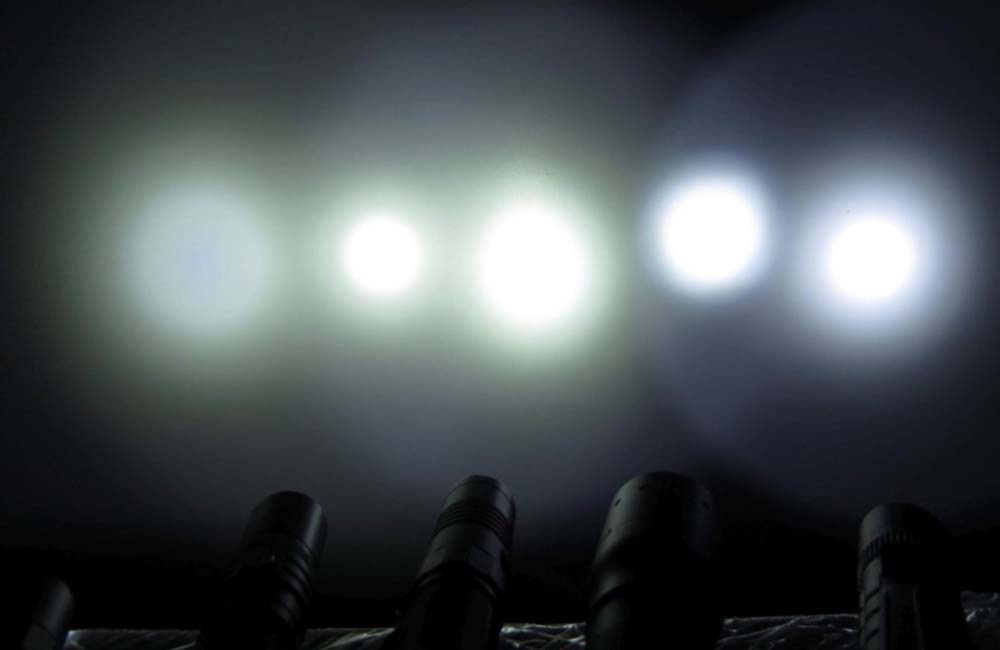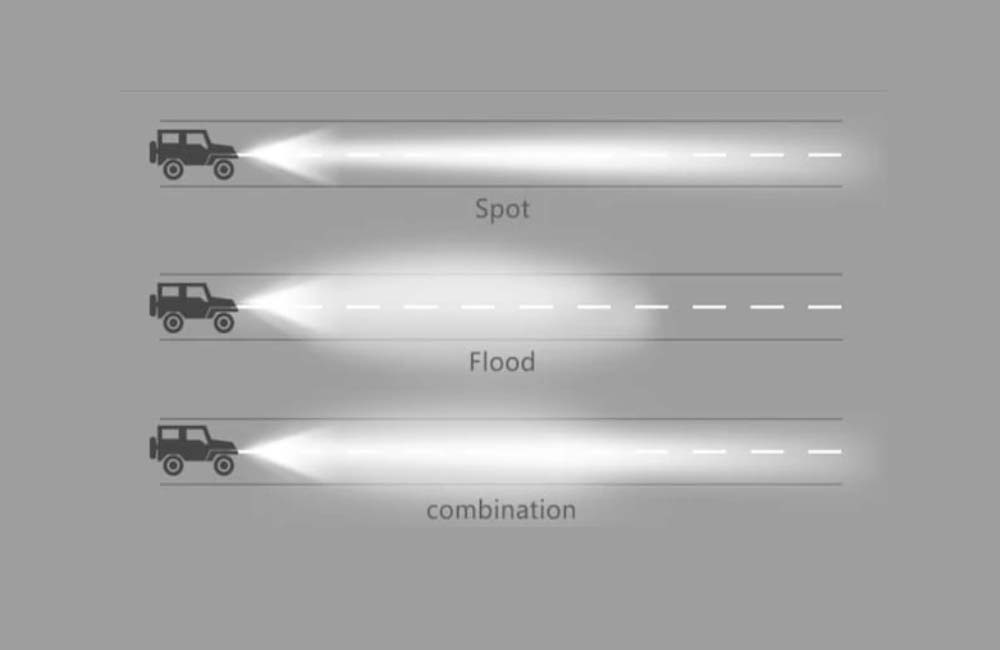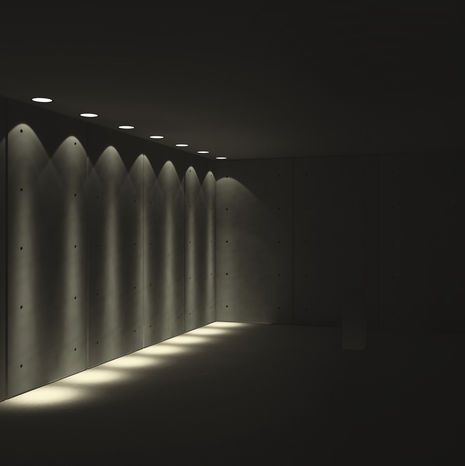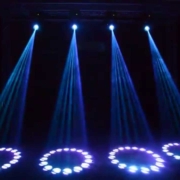Everything to Know About Beam Light
People often search online about the best beam light flashlights. However, there is no straightforward answer to it yet. The head torch or flashlight is the primary tool to offer light whenever you need it. But, many users want more than it. They look for the various types of light beams with different features and qualities. If you are one of them, then this article will be helpful to you. Today, we will discuss the different light beam types with their features. We will also guide you on how you can choose the best light beam flashlight.

About Beam Light
Before discussing its types, we need to know what precisely a beam light is and what it does. Look around for the things producing light. All such things have the light beam that is created by the small light rays. Therefore, there are small light rays that make light beams. All light rays in the beam are similar to one another. As such, there will be a bundle of parallel rays. These rays can emerge from a single point and then blow out to make the light beam broader. Or, these light rays may aim at a single point from multiple directions.
The Source of Light
In the early stages, HID’s and light bulbs were the familiar sources of lighting up flashlights. But today, all brands use LED lights only for this purpose. Here, a light source means the LED light type we have in a flashlight. All LED lights are not similar. For appropriate working, these lights must use a suitable reflector. The light color is also vital. For example, warmer colors are ideal in foggy conditions due to less reflection. They are also crucial for creating the right ambiance. Cool white light reaches further and is more striking. So, the light source plays a critical role in a flashlight.
Beam Light Emergence
The flashlight lens and reflector are the cause behind the emergence of the beam. Most lights available on the market today are using plastic or glass lens. However, some lights still use pattern lenses, but they are not very common. These lenses are ubiquitous in smaller flashlight models. Smaller lights have smaller rooms, so these adjustable lenses work perfectly for offering sufficient light. Still, these smaller lights offer far-reaching beams.
The Reflector
The reflector shape is vital in creating a specific beam light. Just when you turn on the flashlight, the HID or LED in your light starts to illuminate. The beams hit the reflector and then convert it in a specific direction. There will be some diffusion if the beam does not touch the flashlight reflector. As such, the light beam will be significantly broader. A deeper and larger flashlight reflector latches more light rays and makes sure the diffusion is less. The result will be a focused light beam.
The reflector type also impacts the beam. A smooth (SMO-reflector) reflector ensures a concentrated or narrow light beam. An Orange Peel (OP-reflector) can also diffuse beams, providing a broader light beam. However, there is one exception. A standard shape SMO reflector creates combined beams. It does well with the concentrated light beam, but all beams do not strike the reflector due to its standard shape. The result will be a diffused light.
There can also be a combination of the deeper shape with the OP reflector. All light beams travel to the reflector because of the deep shape. As a result, there will be a focused light beam. However, these beams break due to the orange peel reflector.
Different Types of Beam Light
When choosing your flashlight, you should take light images as a key. The light image is the light beam as it diffuses from the LED or HID flashlight. Light beams are available in three types; a combined beam, a broad beam, and a focused beam. However, there is also another type of light beam called convergent. The light of this beam focuses at one point. You can combine this beam type with focused beams.

Some lights are enhanced using the focus system. You can correct the distance between the reflector and LED light with the help of a focus system. You decide whether to use a narrow light beam or a broad light beam according to the distance in that capacity. All three beams come with unique qualities. They all provide you a perfect light solution for different types of situations.
Combined and focused beam light can blind the oncoming traffic or yourself. However, you can avoid this risk by having a broad light beam flashlight. Let’s take a quick look at the three types of light beams for a better understanding.
1. Broad Beam
A broad light beam illuminates large areas from the short distance, and these beams are ideal for camping, security services, walks, photography, and on-site surveillance. You do not require a distant light beam for such situations. However, a broader beam works best as it can easily illuminate your surroundings with sufficient light.
2. Focused Beam
If you are looking for a flashlight solution for longer distances, then a focused beam is the right choice. You can purposefully light up any object using a focused beam light. It offers a clear vision from far away without any diffusion. This type of light beam is an ideal choice for climbing, law enforcement, and search ops. This light beam is also an excellent choice for discovering caves where you need a high-quality flashlight with a perfect focus.
3. Combined Beam
The combination of the broad and focused light beam is called a combined beam. You can illuminate surfaces both broad and far using a combined beam light. The combined beam is suitable for situations where you need the maximum light possible in your surroundings. These types of light beams are one of the necessary tools in rescue ops. This type of light beam is also best for hiking or trail running in mountains.
We have shared a brief introduction of the three light beams with their primary use. Now, let us help you know how you should choose a perfect flashlight for your particular use.
Choosing the Right Flashlight
Headlamps are extremely popular in the market. But, flashlights are still the most suitable lights whenever you are looking for handheld lights. You need a flashlight whenever there is a need for a powerful portable beam. It is also the right choice when precision and dexterity are essential to control the light. Flashlights are also the only lighting choices in signaling situations, and setting light for a specific task.
Advancement in battery efficiency and LED technology has helped the flashlights a great deal. Today, flashlights are smaller, brighter, and lighter than ever before because of this advancement. The only concern is to choose the right flashlight for your specific application. The following information will assist you in selecting the most appropriate beam light.
1. Understand Flashlight Choices
First of all, you should be clear about the flashlight choices. There are a few critical factors to keep in mind when choosing your flashlight. These factors include light output, weight, size, and battery run time and type. A flashlight starts from below $20, and it can be as costlier as $200+, depending on the type and quality. A few key factors deciding the price of a flashlight include the brightness, power, circuitry technology, and battery. More powerful lights are the pricier lights because of the advanced bulb it uses.
If the flashlight features a rechargeable battery, the cost of the light goes up. Water resistance, strong impact, several lighting modes, and heat dissipation are a few other features that affect the product cost. Before you buy a flashlight in a store, you must check out these things:
- How the flashlight switch functions (turns off and on)? Can it work inadvertently inside the pack? Or, how would it work in extreme conditions, like cold conditions? Can you operate the button efficiently even when you are wearing gloves?
- Does it look rugged enough for your requirements?
- How does the flashlight feel when you hold it in your palm?
- Would you require a tool for changing the batteries?
The above listed are the crucial questions that you must ask yourself while buying a flashlight. It will help you understand the appropriate flashlight choices.
2. Flashlight Performance
ANSI FLI is the flashlight standard introduced in the year 2009. These standards are to rate and test flashlight models in the appropriate way. It is up to the manufacturers to try their flashlights comply with ANSI FLI standards. However, all big brands include specific performance data of their product on the packaging. This performance data is as follows:
Light Output:
The light output is measured in light lumens. It is the light intensity measure when coming from the flashlight when the brightness is at its highest. Manufacturers may show the light output according to different light settings. It is an exceptional comparison tool; however, it doesn’t tell the complete story about the light brightness. Beam light intensity, type, and distance impact the light effectiveness in various applications. The output of light can range between 20 to 3500 lumens.
Beam Distance:
Beam distance is measured by meters. It tells how long the light beam travels before the light brightness moderates the full moonlight. Full moonlight is suitable for careful and safe travel outdoors. The beam distance varies with different brightness settings.
Run Time:
Run time is measured by hours. How quickly the light output drops to 10% on a new battery concerning the recommended beam output. Over time, the beam output of light may decrease gradually or remain constant followed by a sudden decrease. Every light mode has a standard run time. A run time graph can provide you the most appropriate light performance illustration over time.
Impact Resistance:
Impact resistance is measured by meters. The flashlight is dropped six times onto the concrete at a rated distance for testing. The purpose of this sort of testing is to make sure that the flashlight can function after accidental drops. This impact resistance test is not for the flashlight being walked over, hit with a hefty object, or used for striking other things.
Water Resistance:
Manufacturers use the IPX system to check the water-resistance of their product. Water-resistant flashlights are suitable for rainy conditions or around water bodies. There are three water resistance ratings of a beam light, such as IPX4, IPX7, and IPX8. IPX4 rating tells that the flashlight is water-resistant from every angle. IPX7 system indicates temporary immersion up to thirty minutes at 1m depth. IPX8 indicates submersion up to four hours at a specified depth.

Additional Functions and Features
Apart from the above shared information, a few more functions and features are also crucial in choosing your flashlight. Such non-ANSI-rated attributes are as follow:
Type of Bulb:
With the emergence of new LED technology, all other types of bulbs are almost ruled out. However, some flashlights still have incandescent lights like krypton bulbs. But, LED lights are best in energy efficiency, impact resistance, brightness, and run time. Therefore, you should choose the bulb type according to your specific requirements.
Beam type:
The dispersion of light depends on a lens reflector surrounding the bulb. The three standard options include flood (fixed), spot (focused), and adjustable. Flood is a single light beam width and perfect for routine tasks while walking or in camp. The Spot (Focused) is the single light beam that is condensed into the spotlight for penetrating the long distance. It is suitable for fast-paced activities, such as route-finding.
The adjustable light beam width can range from focused to wide. It is perfect for climbers who need a flashlight to illuminate the next pitches or for studying maps.
Regulated Output:
If the light has a regulated output (power supply), it will maintain a stable and ideal brightness level through the life cycle of the battery. However, the light output goes down significantly and abruptly towards the end. If the light is not regulated, it will progressively go dimmer as the battery power drains. So, the regulated output is another vital feature to look at while buying a beam light.
Battery Type:
The type of battery is so important. Before you buy a flashlight, do a bit of research about the battery type it uses. Is it readily available in the market? It is essential because you will have to replace your flashlight battery at some point in time. AA or AAA disposable batteries are widespread and easily accessible in the market. Another common choice is the CR123A disposable battery. However, CR123A is an expensive choice and also not easy to find. Some flashlights still use D-Cell batteries.
There are also rechargeable batteries. Lithium-ion batteries are common types of rechargeable batteries. You can recharge a built-in lithium-ion battery using your computer’s USB connection, solar panel, or DC or AC outlet. The upfront cost of rechargeable batteries is high than its counterparts. However, they have a low operating cost, and you don’t have to dispose of these batteries.
Another type of flashlight battery is a renewable battery. The built-in renewable flashlight batteries get energy from a solar panel or hand crank. Such batteries are perfect for emergency supplies.
Attention: You must not use a lithium-ion or lithium battery with your flashlight without the manufacturer’s recommendation. Choosing the wrong battery type can damage your flashlight due to a mismatch.
Modes:
If you need the flashlight for general purposes, you can opt for a flashlight with one setting. However, some models come with multiple modes for a particular use. These modes include high, medium, low, and boost. You may not use various flashlight modes often, but additional light modes can help you in particular situations. If the light mode is brighter, the runtime will be shorter.
Some models come with unique modes, such as SOS or strobe features. Mode sequencing can also be another option. You can integrate this feature into your flashlight through a PC using the software.
Controls:
Controls of the flashlight are so crucial for a few users. So, how a flashlight turns on and off and how different lighting modes activate is essential. You can use your thumb to operate sliders and push-buttons. Rotating bezels need both hands for operation. Some lights feature a safety lock that rules out accidental activation of the flashlight. This feature helps you prevent issues like flat batteries and inconvenience.
Some lights also have a non-clicking (silent) insta-beam function. This function requires you to depress the switch slightly for light activation. You can turn off the flashlight by releasing or clicking the button fully. This feature is ideal for law enforcement use.
Shape and Material:
The most common flashlight body materials are either aluminum alloy or plastic. Some beam light flashlights have stainless steel heads for superior impact resistance. Aluminum bodies differ from one another. A thinner style is lighter and a thicker one would be tougher.
Cylindrical body shape is standard, but it rolls around when you keep it on the surface. However, some flashlights are resistant to rolling through profiling. You will also find flashlights with knurled patterns on their body. These patterns help reduce slipping and provide grip.
Weight and Size:
This choice is a personal preference and depends on how you feel about it. A heavier and larger flashlight does not need to be brighter. However, it should have a bigger battery with extra capacity for improved run time. If you need a portable flashlight that you can carry with you anywhere you go, then look for a compact battery size with less weight.
Accessories:
Some models come with add-ons. Such accessories include belt clips, holsters, lens filters, diffusers, and lanyards, etc. However, these accessories are also available separately in the market. If you don’t find them with the package, you can also buy them from the market.

Conclusion
There are three types of beam light available, such as broad, focused, and combined beam. All three options come with unique features and suitable in different situations. When buying a flashlight, you should compare its features to know which ones look most appropriate as per your requirements. A few other deciding factors include bulb type, run time, impact resistance, battery type, modes, controls, etc.
For More Information, Contact Us Today!


